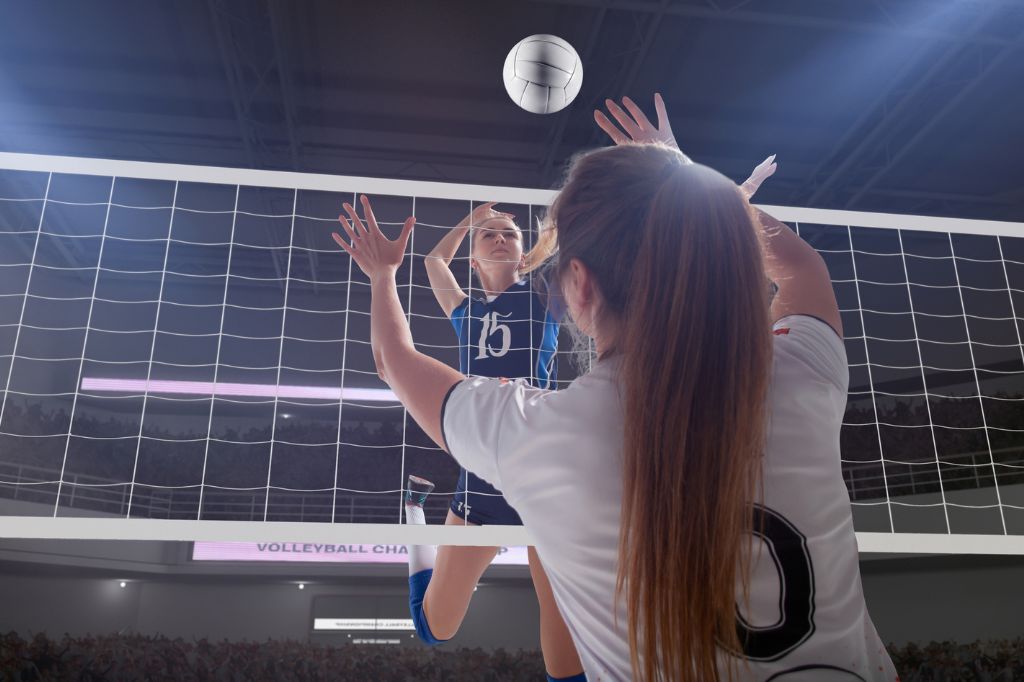
Volleyball is a fast-paced, dynamic sport that continues to grow in popularity among young athletes. It builds strength, coordination, teamwork, and confidence, but like any sport, it comes with a risk of injury. Whether it’s a high school player diving for a dig or a middle schooler spiking at the net, understanding the most common volleyball injuries and how to prevent them is key to keeping young athletes healthy, safe, and in the game.
Why Are Volleyball Injuries Common in Young Athletes?
Despite being a non-contact sport, volleyball involves repetitive overhead movements, explosive jumping, and quick direction changes, all of which place stress on the body. Young athletes are especially vulnerable because their bodies are still developing, and they may lack the strength, flexibility, or conditioning needed to protect their joints and muscles from strain.
Injuries can occur from:
- Overuse (repetitive movements without enough rest)
- Improper form or technique
- Insufficient warm-up or conditioning
- Collisions or awkward landings
- Playing through pain or fatigue
Most Common Volleyball Injuries in Young Athletes
1. Shoulder Injuries
Volleyball involves constant overhead movements, such as serving, spiking, and blocking, that can lead to overuse injuries in the shoulder.
Common volleyball shoulder injuries include:
- Rotator cuff tendinitis
- Labral tears
- Shoulder impingement
Young players may experience shoulder pain during or after play, especially when they raise their arms above their head.
2. Ankle Sprains
Ankle injuries are among the most common acute volleyball injuries, often occurring when players land awkwardly after a jump or step on another player’s foot at the net.
Symptoms of an ankle sprain may include:
- Swelling
- Bruising
- Pain with weight-bearing
- Instability in the joint
These injuries can range from mild to severe and often require time off from play to heal properly.
3. Knee Pain and Jumper’s Knee
Knee pain, particularly patellar tendinitis, also known as “jumper’s knee,” is common among volleyball players due to frequent jumping and landing.
Signs of jumper’s knee include:
- Pain just below the kneecap
- Discomfort during jumping or climbing stairs
- Tenderness over the patellar tendon
Without proper rest and treatment, this overuse injury can progress and interfere with a player’s ability to play.
4. Finger Injuries
The hands and fingers are constantly at risk in volleyball from blocking, setting, and digging. Sprains, dislocations, and even fractures can happen, especially when a ball is mishandled or hits at an awkward angle.
Signs of finger injuries include:
- Swelling or deformity
- Inability to fully extend or flex the finger
- Bruising or tenderness
Prompt treatment is essential to prevent long-term stiffness or joint problems.
5. Low Back Strain
Jumping, diving, and quick rotations can lead to lower back strain or irritation, especially in young athletes with weak core muscles or poor posture.
Symptoms may include:
- Soreness after games or practice
- Pain with twisting or extending the back
- Muscle tightness
Rest and strengthening exercises can help correct the issue and prevent recurrence.
6. ACL Tears
ACL (anterior cruciate ligament) tears can also occur in volleyball, typically during sudden stops, changes in direction, or awkward landings after a jump. Female athletes, especially in their teens, are at higher risk due to biomechanical and hormonal factors.
Signs of an ACL tear include:
- A loud pop or sudden shift in the knee
- Immediate swelling
- Instability or the knee “giving out”
- Difficulty walking or bearing weight
ACL injuries often require a longer recovery period and may need surgical repair followed by physical therapy. Teaching proper landing mechanics, jump training, and neuromuscular conditioning are key to prevention.
Injury Prevention Tips for Young Volleyball Players
The good news is that many volleyball injuries are preventable. Here’s how players, coaches, and parents can help reduce risk:
Warm Up and Stretch Properly
Start every practice or game with dynamic stretching and light cardio to loosen the muscles and increase circulation. Post-practice static stretching helps prevent tightness.
Focus on Strength and Conditioning
A strong core and balanced muscle groups can protect joints and prevent overuse injuries. Incorporate strength training and stability exercises into the weekly routine.
Use Proper Technique
Young athletes should be coached on safe and effective techniques for spiking, serving, setting, and landing. Avoiding poor mechanics is one of the best ways to prevent shoulder and knee injuries.
Wear Supportive Gear
Wearing ankle braces or supportive shoes with good traction can help prevent ankle sprains. Knee pads can cushion impact during dives and slides.
Don’t Ignore Pain
Playing through pain can turn a minor issue into a serious injury. Encourage athletes to speak up if they’re hurting and take rest seriously.
Allow Time for Recovery
Rest days and breaks between seasons are just as important as practice time. Overtraining is one of the top causes of injuries in youth athletes.
When to See a Specialist for a Volleyball Injury
If a young athlete is experiencing:
- Pain that lasts more than a few days
- Swelling or bruising that doesn’t improve
- Loss of motion in a joint
- Difficulty walking, jumping, or serving
…it’s time to schedule an evaluation.
At Orthopedic Specialty Institute, our team is experienced in diagnosing and treating volleyball injuries in young athletes. We offer personalized care plans that include surgery if necessary, physical therapy, imaging, bracing, and return-to-play guidance to help athletes heal properly and safely return to the court.
Keeping Young Volleyball Players Strong and Injury-Free
Volleyball should be fun, competitive, and safe. By recognizing the most common types of volleyball injury, understanding how they happen, and taking steps to prevent them, young athletes can enjoy the sport while protecting their long-term health.
If your child or student athlete is experiencing joint pain or recovering from a volleyball-related injury, click here to contact Orthopedic Specialty Institute to schedule an appointment. Our goal is to keep athletes playing their best, safely and confidently.
